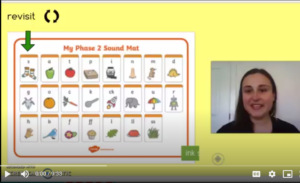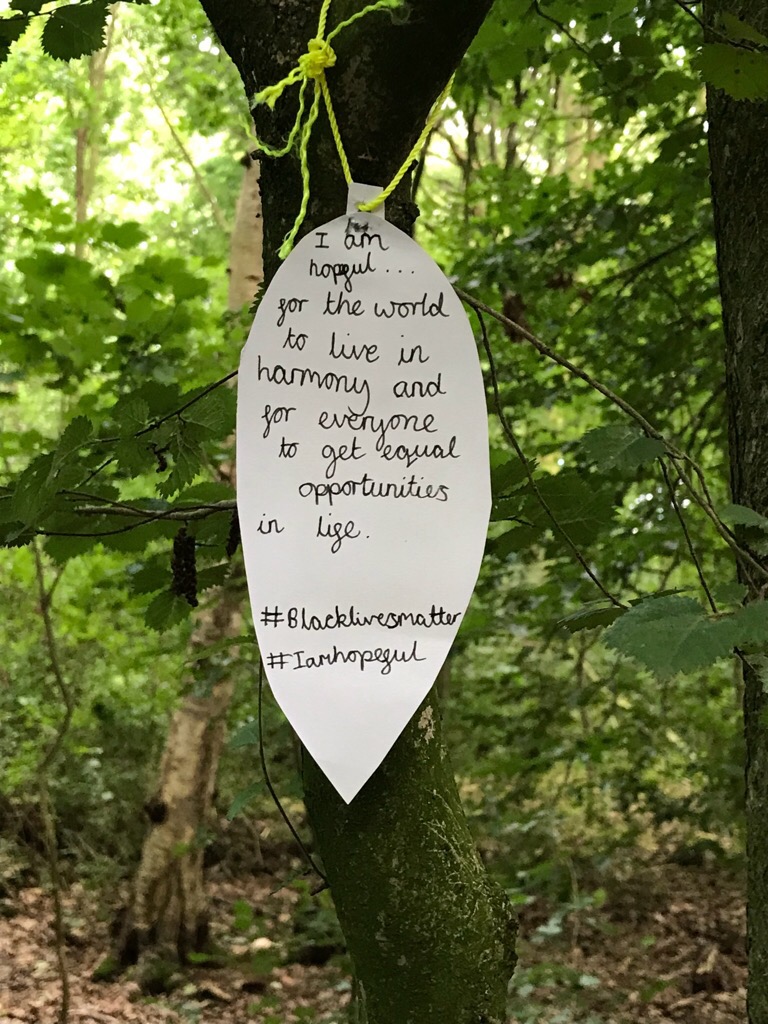Goodbye for now…
Here are our goodbye videos from each teacher and our end of year mementos with everyone’s name on. You can download and print your own or we will have a copy for you in September, if you want. Have an amazing summer!
Mrs Latham : Goodbye 1,2V video
Miss Parling : https://screencast-o-matic.com/watch/cYi6li5JMT
Miss Lowry : https://screencast-o-matic.com/watch/cYi1Qa54Zv
14 July 2020: Home learning
Phonics
- You will need a pencil and paper OR whiteboard and pen for this lesson.
- If your child needs support writing sentences they could use the sentence frame to help.
Phonics play – buried treasure (Phase 3/4)
→Need more of a challenge? Play ‘Phase 4 sentence substitution’ on Phonics bloom. Can you make a sentence that makes sense? What about a silly sentence?
Maths
Watch the numberblock 19 and 20 videos.
Draw the number 19 and 20 on the floor or make a 19 and 20 sign on paper.
Is the answer 19 or 20 to the following statements?
- I am an odd number.
- I am the bigger number.
- Half of me is 10.
- I am one big ten and 9 ones.
- I am an even number.
- I am two big tens.
- I am the smaller number.
- I can count in 2’s.
→Need more of a challenge?
Is the answer 19 or 20 to the following number sentences?
- 14 + 5 =
- 16 + 4 =
- 12 + 7 =
- 5 + 5 + 5 + 5 =
Healthy living – eating
Read about the ‘eat well plate’ and how different foods help us to maintain a healthy diet.
Discussion: How can you eat a healthy diet? Look at the list of foods on page 9 and decide if you should eat ‘lots, some or little’ of these foods. Remember to explain why.
Activity: Draw a plate of food that you think would be a healthy lunch. Explain why. You could even make this meal for your lunch!

→Need more of a challenge? Can you write why your meal is a balanced, healthy meal?
My World Kitchen
Choose a video and watch of one of the talented young cooks in their own kitchen. Each dish celebrates their heritage by cooking some very special recipes. You will discover where these dishes and ingredients come from along the way.
Why not have a go at either cooking one of the dishes you see or cooking your favourite dish? If you have a go at cooking, let us know what you cooked and why.
Welcome to your new class
Hi everyone
We hope you’re all OK and are managing to stay happy, healthy and safe. Recently, you found out who your class teacher will be next year when return to school – remember, Autumn is for all children.
Here’s a short video message from each teacher welcoming you into their class and giving you some information about next year.
We hope you have a great summer and we can’t wait to see you all in September!
Welcome to 5/6 B
Mr Freeman here! I hope you are looking forward to joining 5/6 B in September. I’m really looking forward to teaching you all and getting to know you. Here is a welcome video.
Welcome to 5/6 S
Good morning, Mrs Hogarth here! I hope you are looking forward to joining 5/6 S in September. I’m really looking forward to teaching you all and getting to know you. Here is a little welcome video. If you have any questions or worries, please send me an email.
sarahhogarth@spherefederation.org
Welcome to 1KN (2020-21)
Hi to our new class! Here is Miss Lowry : https://screencast-o-matic.com/watch/cYijQ75pBe
and Mrs Lake reading a story – Dogger by Shirley Hughes : https://screencast-o-matic.com/watch/cYiQ6l5GIc
We would love to see a photo of you with your favourite toy. If you can take one and would like to send it, you can email it to us on : kaylowry@spherefederation.org natalielake@spherefederation.org
Also, if you would like to vote for our class dog’s name, email us with your choice by 16 July and we will announce the name on 17 July on the Year 1 and 2 Class News page.
Felicia Von Housen
Seamous O’Doggel
Jose Lingua
Loretta Flowers
Here are the people you will see in our class at different times.
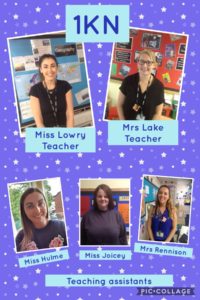
Welcome to 1,2V (2020-21)
Hi to my new class! Here is me (Mrs Latham) reading a story – Dogger by Shirley Hughes : Hello 1,2V video
I would love to see a photo of you with your favourite toy. If you can take one and would like to send it, you can email it to me on vickylatham@spherefederation.org
Also, if you would like to vote for our class dog’s name, email me with your choice by 16 July and I will announce the name on 17 July on the Year 1 and 2 Class News page.
Sheila McPaws
Douglas Duggee
Doris Wagalot
Trevor Woofington
Ethel Fetcher
Frank Sniffy
Here are the people you will see in our class at different times.
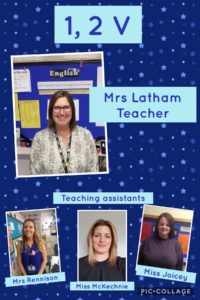
Welcome to 5/6M
Here is a short video to welcome you to your new class. Please contact me if you have any questions or you just want to say hello.
Where’s my Teddy?
We can’t believe that this is our final week of home learning activities. Look out for something special arriving in the post this week and remember to check back on Friday for a special video.
We’re going to finish our home learning activities with ‘Where’s My Teddy?’ written by Jez Alborough.
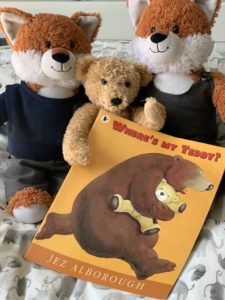
We often celebrate our learning and the end of our time in Nursery with a Teddy Bear’s picnic party. Sadly, this isn’t going to be possible this year but we didn’t want to miss out on all of the fun. So, this week, we’d love it if you could have a Teddy Bear’s picnic at home (inside or outside depending on the weather!) and send us your photos by Thursday.
Remember to email your photos to scholesf1@spherefederation.org
We’ll share all of your photographs on Friday. We thought that this would be a lovely way to end the year – to fill our Class News Page with all of your happy, smiling faces.
Where’s My Teddy
- Did you enjoy the story?
- How do you think Eddy felt when he lost his teddy?
- Do you have a favourite teddy bear or soft toy? Talk to your family members about their favourite toys as children. They may still have an old favourite teddy hidden away somewhere that they can show you.
Here are some activities that you can try that are linked to the story.
Mark Making – Draw or cut out an outline of a bear. Ask your child to add eyes, a nose and a mouth to the bears face. You could encourage them to draw some clothes on the bear or a bow tie and decorate it with patterns. There are also some free printable pencil control activity sheets to download on Twinkl.
Music – Sing along at home to this well-known family favourite all about a teddy bear’s picnic.
Cooking – Find a recipe to bake something to eat at your Teddy Bear’s Picnic this week. There are lots of recipe ideas on the I Can Cook website. Some bears like to eat honey; you might like to make a honey sandwich! Ask your child to help butter the bread and add their choice of sandwich filling. With help, they can cut their sandwiches carefully into squares or triangles.
Understanding the World – Do you like honey? If you’ve never tried it before, have a try. What does it taste like? Where does honey come from? Maddie Moate knows all about where honey comes from because her parents are bee keepers. Watch these short clips to find out about how bees make honey and how Maddie harvests honey from her bee hives.
Mathematics
1) Top Marks has a teddy bear counting game that children really enjoy playing at Nursery. We help children to recognise the number so that they know how many cupcakes to feed the bear.
2) Ask your child to choose some soft toys/teddies to invite to the picnic. How many have they chosen? How many plates and cups will they need?
Watch – Teddy bears are obviously very popular as there are lots of programmes available to watch all about bears! Here’s an episode from Postman Pat about a Special ‘teddy’ Delivery or you can find out what happens in the town of Biggleton when too many bears arrive for the picnic.
